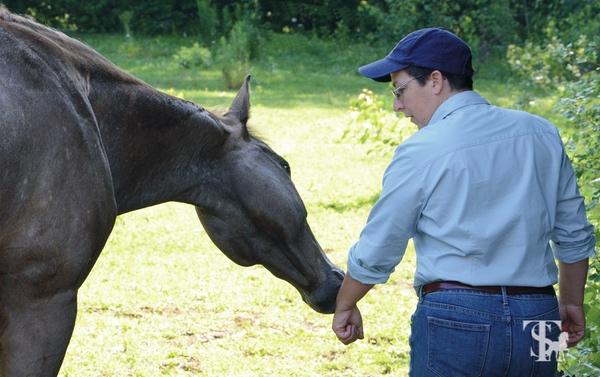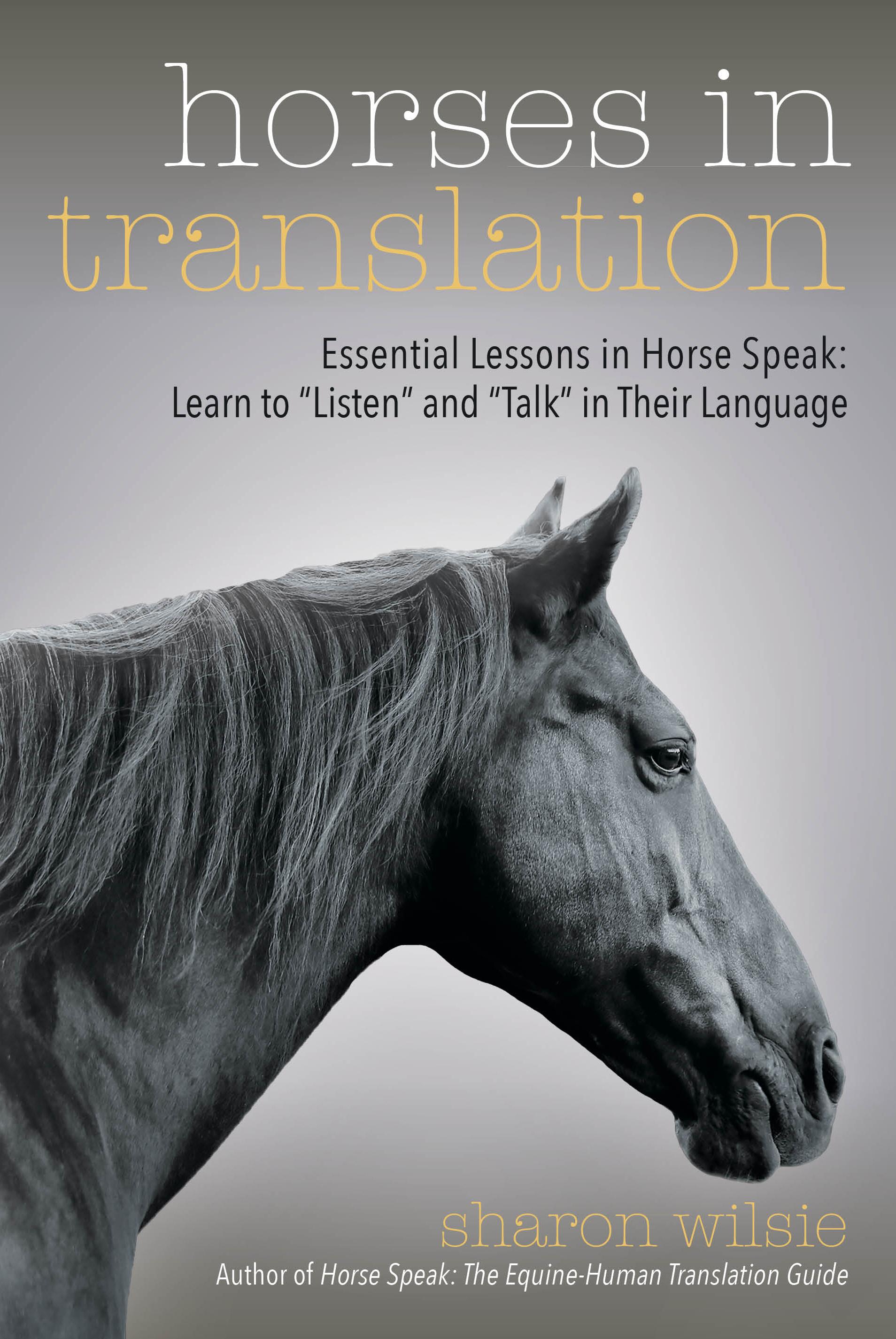
‘If the Barn Is On Fire’
In this excerpt from her new book Horses in Translation, equine behavior specialist Sharon Wilsie follows up the techniques she taught in her international bestseller Horse Speak, explaining how we can learn what our horses are saying to us, as well as how to “talk back” in their language.
At my clinics, I always begin by talking about a few things before we get started. When everyone is packed into a small space together, sitting in chairs, I will often comment that although people may be seated close together, no one is touching. Even married couples and best friends are not sitting on each other’s laps. As a species, we are keenly aware of our personal space, and so are horses. If dogs access the side of our nature that likes closeness, then horses access the side of our nature that needs security through personal space.
Furthermore, not only do horses and humans need personal space defined and respected, we also both need the environment we are in to be secure. If the barn suddenly caught fire during a clinic, we would not be continuing to have a conversation. Instead, everyone would scramble to get out, possibly even knocking each other over.
When horses scramble to escape what they deem a dangerous situation, they try to avoid knocking each other down. To make sure they can do this whenever and wherever they need, preserving the herd, horses practice navigating each other’s personal space all day long.
The need for the environment to be secure is so strong in horses that if nothing is done to prove their world is safe, most of them will remain skeptical of their surroundings. Humans walk into a new barn and instantly identify all the objects in the space — doors, brushes, floor mats, halters, lead ropes, electrical cords. We name all the things, claiming “ownership” over anything in our environment, thus deeming them non-threatening since we know what they are. Horses do not objectify the world in this way. They express ownership over objects once they have inspected them (by feeling free to touch or manipulate the object), but they do not generalize objects for the most part or until they have had enough experience with similar objects to warrant generalized learning. In other words, one horse trailer is not any horse trailer. One brush is not any brush.
Horses have a direct experience of the world, so their thoughts are more likely to flow out: “This wiggly thing [lead rope] smells like me and my person… this is mine….” Or, “The water in this bucket tastes good. Water in that bucket does not smell the same. It is a pleasure drinking good water.”
Horses cannot have a direct relationship with us until they have confirmed that their immediate environment is safe. If they are led in and out of a barn every day for a year but never get to explore the environment and touch any items in the area, they will never be entirely certain those items are safe. Before she told him to go ahead and run, a horse’s mother would have touched everything as she inspected a new pasture with her tiny baby at her side. If you turn a horse loose in a new pen or paddock, he will usually walk around and sniff and inspect each post, rock, and tree before he has decided the area is safe. This behavior is so predictable, in fact, that simply copying it is the surest way to tell a horse that you — like his mother — have inspected the area and determined all is well.
If the barn is on fire in the horse’s mind, it is going to be tough to say hello. Simply ignoring a horse for a few minutes while he is in his stall and banging around outside, inspecting the items in the aisle and hanging from the doors, is the fastest way to impress him. If you act like you own the place, he will find you very interesting, and you will have the upper hand in convincing him you are a benevolent leader who is looking out for any bogeyman that might want to harass him. While escorting a horse into a new environment, you can take the time to lead him around and let him see and smell posts, signs or racks on the wall, buckets, trunks, and so on. As you kick and manipulate the objects with a determined demeanor, your horse will watch you closely to see what else you “own.” If you invite him to “own” those things, too, he will begin to “buddy up” with you (seeing as you have such power over these objects!).
I know several people who now bring their horses on walks around showgrounds early, just to give them time to literally “kick some posts” in front of their horses while no one is looking! They all agree their horses are much calmer during competition when they do this.
This excerpt from Horses in Translation by Sharon Wilsie is reprinted with permission from Trafalgar Square Books (www.horseandriderbooks.com).







Leave a Comment